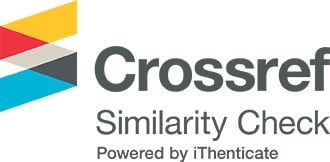Tình hình sử dụng thuốc điều trị tăng huyết áp trên bệnh nhân lọc máu chu kỳ tại Bệnh viện An Sinh Thành phố Hồ Chí Minh năm 2023
Các tác giả
DOI: https://doi.org/10.59294/HIUJS.29.2024.611Từ khóa:
thuốc điều trị tăng huyết áp, bệnh thận mạn, lọc máu chu kỳTóm tắt
Đặt vấn đề: Bệnh thận mạn là vấn đề sức khỏe có tính toàn cầu, là nguyên nhân thường gặp nhất gây tăng huyết áp. Việc lựa chọn các thuốc điều trị tăng huyết áp trên đối tượng này cần được quan tâm để đảm bảo tính an toàn. Mục tiêu: Xác định tỷ lệ, các vấn đề và yếu tố liên quan đến sử dụng thuốc điều trị tăng huyết áp trên bệnh nhân. Đối tượng và phương pháp nghiên cứu: Nghiên cứu mô tả cắt ngang hồi cứu 309 hồ sơ bệnh án của bệnh nhân được chẩn đoán suy thận mạn có kèm tăng huyết áp, có chỉ định lọc máu chu kỳ tại Bệnh viện An Sinh được lấy mẫu từ ngày 01/07/2021 đến 30/06/2023. Kết quả: Có 309 hồ sơ bệnh án được thu thập và phân tích trong đó tuổi trung bình của các bệnh nhân trong nghiên cứu là 55.7 ± 15.1. Nhóm bệnh nhân từ 60 tuổi trở lên chiếm tỷ lệ cao nhất là 44.0% và nhóm dưới 30 tuổi chiếm tỷ lệ thấp nhất 2.3%. Nhóm thuốc sử dụng nhiều nhất là nhóm chẹn kênh canxi với tỷ lệ 73.1%. Phác đồ phối hợp 3 thuốc chiếm tỷ lệ cao nhất 39.8%. Các vấn đề liên quan đến thuốc được ghi nhận bao gồm thời điểm dùng thuốc so với bữa ăn chiếm tỷ lệ cao nhất (67.6%) và lựa chọn thuốc chiếm tỷ lệ thấp nhất (1.3%). Người bệnh từ 60 tuổi trở lên (OR=0.62, 95% CI: 0.40-0.89), bệnh lý kèm từ 3 bệnh trở lên (OR=0.75, 95% CI: 0.53-1.10) và số lượng thuốc trong đơn từ 3 thuốc trở lên (OR=1.86, 95% CI: 1.06-3.20) được ghi nhận là những yếu tố liên quan đến xuất hiện các vấn đề liên quan đến thuốc trong nghiên cứu. Kết luận: Thuốc chẹn kênh calci và phác đồ phối hợp 3 nhóm thuốc được ưu tiên sử dụng ở bệnh nhân lọc máu chu kỳ. Tuổi, bệnh lý kèm và số lượng thuốc trong đơn là yếu tố làm tăng nguy cơ xảy ra các vấn đề liên quan đến thuốc.
Abstract
Background: Chronic kidney disease (CKD) is a global health problem, one of the medical diseases with many serious complications and a high mortality rate. CKD is the most common cause of hypertension, the selection of drugs to treat hypertension in this population needs to be taken into account to ensure safety and effectiveness, contributing to improving the disease condition and improving quality of life for patients. However, coordination is also related to many issues that can be harmful or potentially harmful to the patient's health, especially for hemodialysis patients. Objective: Determine the rate, problems and factors related to the use of antihypertensive drugs in hemodialysis patients. Subjects and methods: Retrospective cross-sectional, descriptive study of medical records of patients diagnosed with chronic renal failure with hypertension and indicated for periodic dialysis with artificial kidney at An Sinh Hospital born between March 1, 2023 and August 31, 2023. Results: There were 309 medical records collected and analyzed, of which the average age of the patients in the study was 55.7 ± 15.1 years. The group of patients aged 60 and over accounts for the highest rate of 44.0% and the group under 30 years of age accounts for the lowest rate of 2.3%. The most commonly used drug group is the calcium channel blocker group with a rate of 73.0%. The 3-drug combination regimen accounts for the highest rate of 39.8%. Problems related to medication were recorded as the time of taking medication relative to meals accounted for the highest proportion (67.6%) and medication selection for the lowest rate (1.3%). Patients with age ≥ 60 years old (OR=0.62, 95% CI: 0.40-0.89), comorbidities of 3 or more diseases (OR=0.75, 95% CI: 0.53-1.10) and the number of drugs in the prescription of 3 or more drugs (OR=1.86, 95% CI: 1.06-3.20) were noted as factors related to the occurrence of drug-related problems in research. Conclusion: Calcium channel blockers and combination regimens of three drug groups are preferred for use in patients on hemodialysis. Age, comorbidities and number of medications in the prescription are factors that increase the risk of drug-related problems.
Tài liệu tham khảo
[1] Agarwal R. and Sinha A.D., “Cardiovascular protection with antihypertensivive drugs in dialysis patients” systemic review and meta–analysis,” Hypertension, Vol. 53. No. 5. pp.860-866. 2009. DOI: 10.1161/hypertensionaha.108.128116
DOI: https://doi.org/10.1161/HYPERTENSIONAHA.108.128116[2] Heerspink H.J., Ninomiya T., Zoungas S and et al, “Effect of lowering blood pressure on cardiovascular events and mortality in patients on dialysis: a systematic review and meta-analysis of randomised controlled trials”, Lancet. Vol. 373. No. 9668. pp. 1009–1015. 2009. DOI:10.1016/S0140-6736(09)60212-9
DOI: https://doi.org/10.1016/S0140-6736(09)60212-9[3] An N.T., Quyên N.N.T. và Như M.H., “Nghiên cứu tình hình sử dụng thuốc điều trị tăng huyết áp trên bệnh nhân suy thận mạn đang lọc máu định kỳ bằng thận nhân tạo tại Trung tâm Y tế Thị xã Giá Rai năm 2021 – 2022”. VMJ. vol 519. số p.h 2. tháng 11 2022. doi.org/10.51298/vmj.v519i2.3686
DOI: https://doi.org/10.51298/vmj.v519i2.3686[4] Đăng H. H. và Hồ N.N., “Khảo sát tình hình điều trị tăng huyết áp trên bệnh nhân bệnh thận mạn chạy thận nhân tạo tại Bệnh viện Đa khoa Bạc Liêu”, Tạp chí Y học Thành phố Hồ Chí Minh, 24(3). tr. 54-62. 2020.
[5] Tam N.T. và Chữ D.X., “Nghiên cứu tình hình sử dụng thuốc trên bệnh nhân đang lọc máu định kỳ tại Bệnh viện Quân Dân Y tỉnh Đồng Tháp năm 2019-2021”, Tạp chí Y Dược học Cần Thơ, số p.h 45. tr 37-44. tháng 6 2023.
[6] Thùy N.M. và Suôl P.T., “Tình hình sử dụng thuốc hạ huyết áp trên bệnh nhân suy thận mạn lọc máu chu kỳ bằng thận nhân tạo tại Bệnh viện Đa khoa tỉnh Kiên Giang năm 2021”, Tạp chí Y Dược học Cần Thơ. số p.h 51, tr. 56-63. tháng 9 2022. doi.org/10.58490/ctump.2022i51.308
DOI: https://doi.org/10.58490/ctump.2022i51.308[7] Masahiko T. and et al, “Analysis of drug Prescription in chronic haemodialysis patients”, Nephrol Dial Transplant, Vol. 17. No. 10. pp.1819-1824. 2002. DOI: 10.1093/ndt/17.10.1819
DOI: https://doi.org/10.1093/ndt/17.10.1819[8] Nguyên T.L.H., “Khảo sát tình hình sử dụng thuốc hạ áp trên bệnh nnhân tạo tại bệnh viện Đa khoa Trung ương Cần Thơ” Luận văn thạc sĩ dược học, Đai học Y Dược Thành phố Hồ Chí Minh. 2015.
[9] Kauric – Klein Z, “Factors Affecting Blood Pressure Control in Hemodialysis”, J Hypertens. Vol. 2. No. 2. pp.113. 2013. DOI:10.4172/2167-1095.1000113
DOI: https://doi.org/10.4172/2167-1095.1000113[10] Peterson C., Gustafsson M., “Characterisation of drug- related problems and associated factors at a clinical pharmacist service-naïve hospital in northern Sweden”, Drugs - Real World Outcomes, Vol. 4 No. 2. pp.97–107. 2017. DOI: 10.1007/s40801-017-0108-7
DOI: https://doi.org/10.1007/s40801-017-0108-7[11] Tigabu B.M, Daba D., Habte B., “Drug-related problems among medical ward patients in Jimma university specialized hospital”, Southwest Ethiopia. J Res Pharm Pract, Vol. 3. No. 1. pp.1-5. 2014. DOI: 10.4103/2279-042X.132702
DOI: https://doi.org/10.4103/2279-042X.132702[12] Kheir N., Awaisu A., Sharfi A. and et al, “Drug-related problems identified by pharmacists conducting medication use reviews at a primary health center in Qatar”, Int J Clin Pharm, Vol. 36. No. 4. pp.702–706. 2014. DOI: 10.1007/s11096-014-9962-5
DOI: https://doi.org/10.1007/s11096-014-9962-5[13] Hội tim mạch Việt Nam – Phân Hội tăng huyết áp, “Khuyến cáo chẩn đoán và điều trị tăng huyết áp ở người lớn”, 2018.
[14] Subeesh VK and et al,“Evaluation of prescribing practices and drug-related problems in chronic kidney disease patients: A cross-sectional study”, Perspect Clin Res, Vol. 11. No. 2. pp.70-74. 2020. DOI: 10.4103/picr.PICR_110_18
DOI: https://doi.org/10.4103/picr.PICR_110_18[15] Ossman D.H. and et al, “Identification of drug-related problems in patients with chronic kidney disease maintained on hemodialysis in sulaimani city”, J. Pharm. Sci. Innov, Vol. 4. No. 3. pp. 172-175. 2015. DOI:10.7897/2277-4572.04338
DOI: https://doi.org/10.7897/2277-4572.04338Tải xuống
Tải xuống: 332











